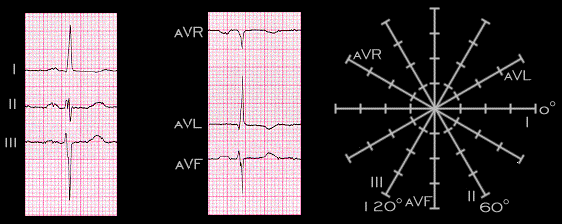
This is the same tracing. Note that the amplitude of the S wave in lead III (-16 mm) is greater than the R wave in lead I (+13 mm) and that the R and S wave amplitudes in lead II are nearly equal. This places the QRS axis as quite perpendicular to the axis of lead II and more or less parallel to the negative axis of lead III. Therefore, the QRS axis is closest to -45 degrees
